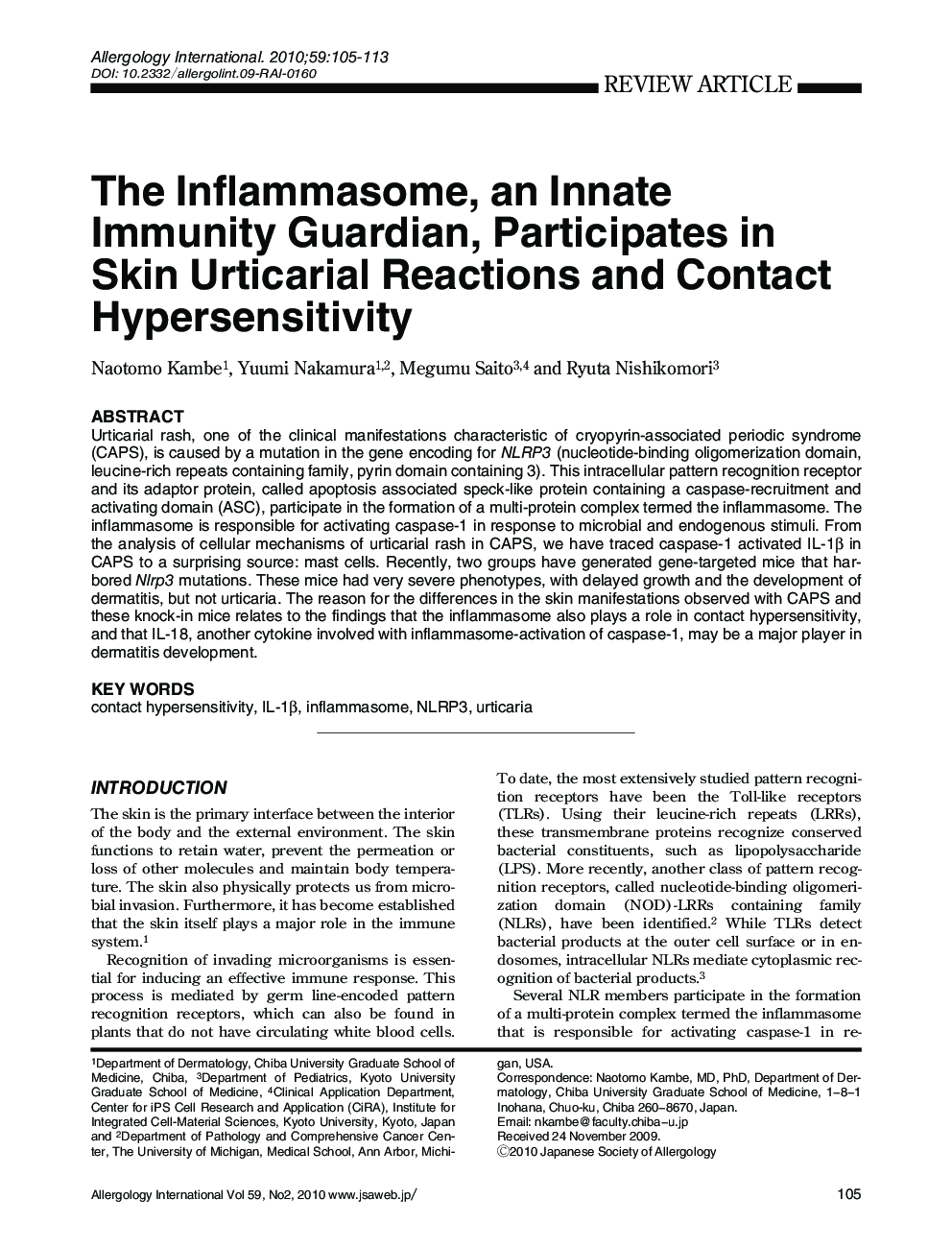| Article ID | Journal | Published Year | Pages | File Type |
|---|---|---|---|---|
| 3341037 | Allergology International | 2010 | 9 Pages |
ABSTRACTUrticarial rash, one of the clinical manifestations characteristic of cryopyrin-associated periodic syndrome (CAPS), is caused by a mutation in the gene encoding for NLRP3 (nucleotide-binding oligomerization domain, leucine-rich repeats containing family, pyrin domain containing 3). This intracellular pattern recognition receptor and its adaptor protein, called apoptosis associated speck-like protein containing a caspase-recruitment and activating domain (ASC), participate in the formation of a multi-protein complex termed the inflammasome. The inflammasome is responsible for activating caspase-1 in response to microbial and endogenous stimuli. From the analysis of cellular mechanisms of urticarial rash in CAPS, we have traced caspase-1 activated IL-1β in CAPS to a surprising source: mast cells. Recently, two groups have generated gene-targeted mice that harbored Nlrp3 mutations. These mice had very severe phenotypes, with delayed growth and the development of dermatitis, but not urticaria. The reason for the differences in the skin manifestations observed with CAPS and these knock-in mice relates to the findings that the inflammasome also plays a role in contact hypersensitivity, and that IL-18, another cytokine involved with inflammasome-activation of caspase-1, may be a major player in dermatitis development.
